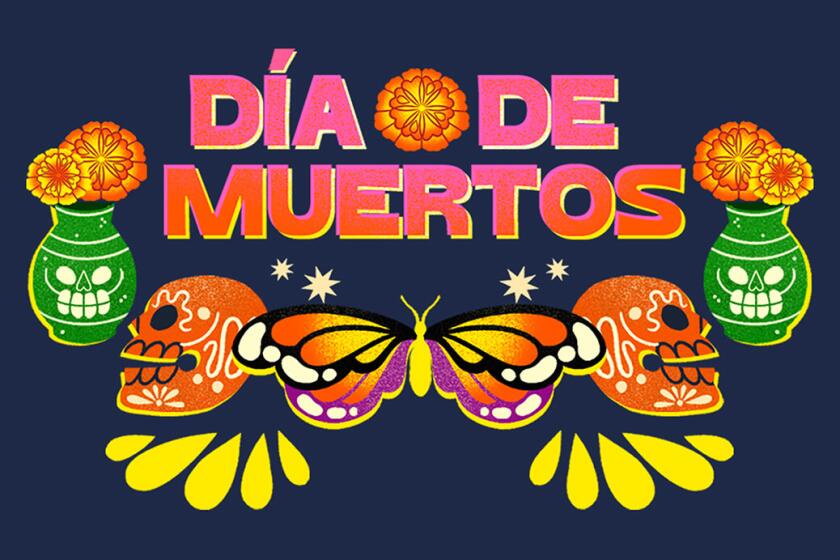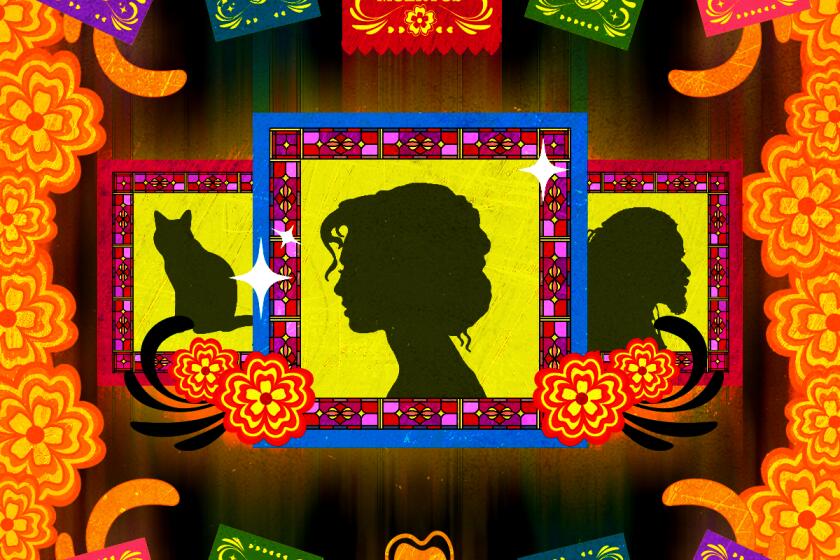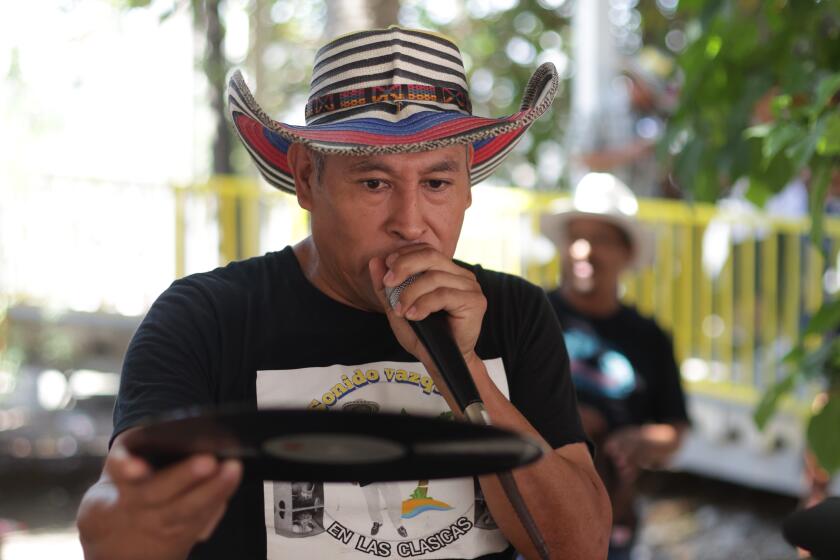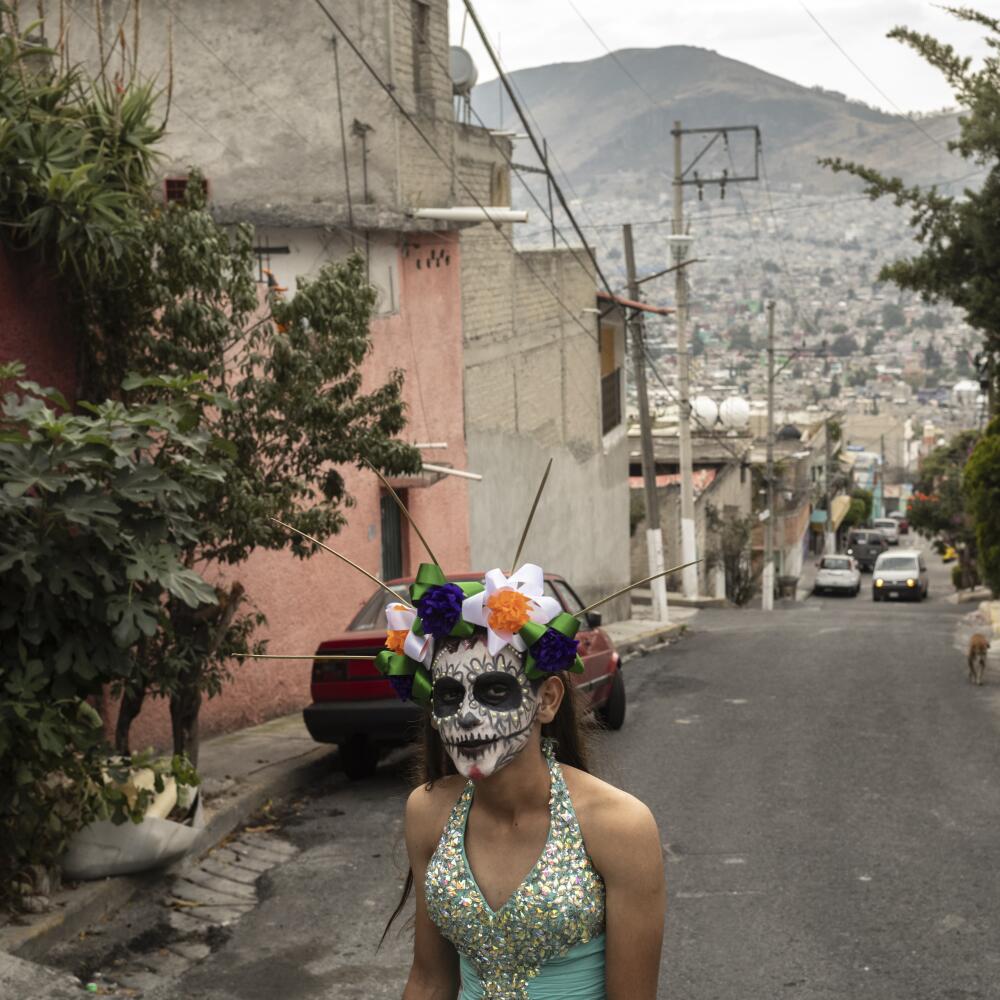
MEXICO CITY â In the early morning Thursday, families arrived at San Lorenzo Tezonco Cemetery in Iztapalapa, east of Mexico City, with brooms, flowers and candles to spend the Day of the Dead with their dead loved ones. CempasĂșchil and celosia flowers surrounded graves on Calle 7 as families swept the dust, hung strips of papel picado and sat together at grave sites.
Near the end of Calle 7, a gray and red building stands in a secluded silence. Protected by a black door with stained glass circles, the Mausoleum Tiresias is the first burial site for trans women in Mexico. Inaugurated in mid-September, it is named after Casa de las Muñecas Tiresias, an organization that aids trans people and sex workers, and also founded the mausoleum.
Kenya Cuevas, founder of Casa de las Muñecas and a transgender rights activist, fought for years to offer a dignified resting place for trans women. She became an activist in 2016 after her friend, Paola Buenrostro, a transgender sex worker, was killed in front of her by a male client. Since then, Cuevas has used the organization to help trans women who were victims of violence. She is working with Mexico Cityâs attorney generalâs office to exhume bodies of victims of hate crimes and move them to the mausoleum.
âIt is a space where we will be able to dignify them, recognize identities, but also to remember their memories as we all deserve,â Cuevas said.
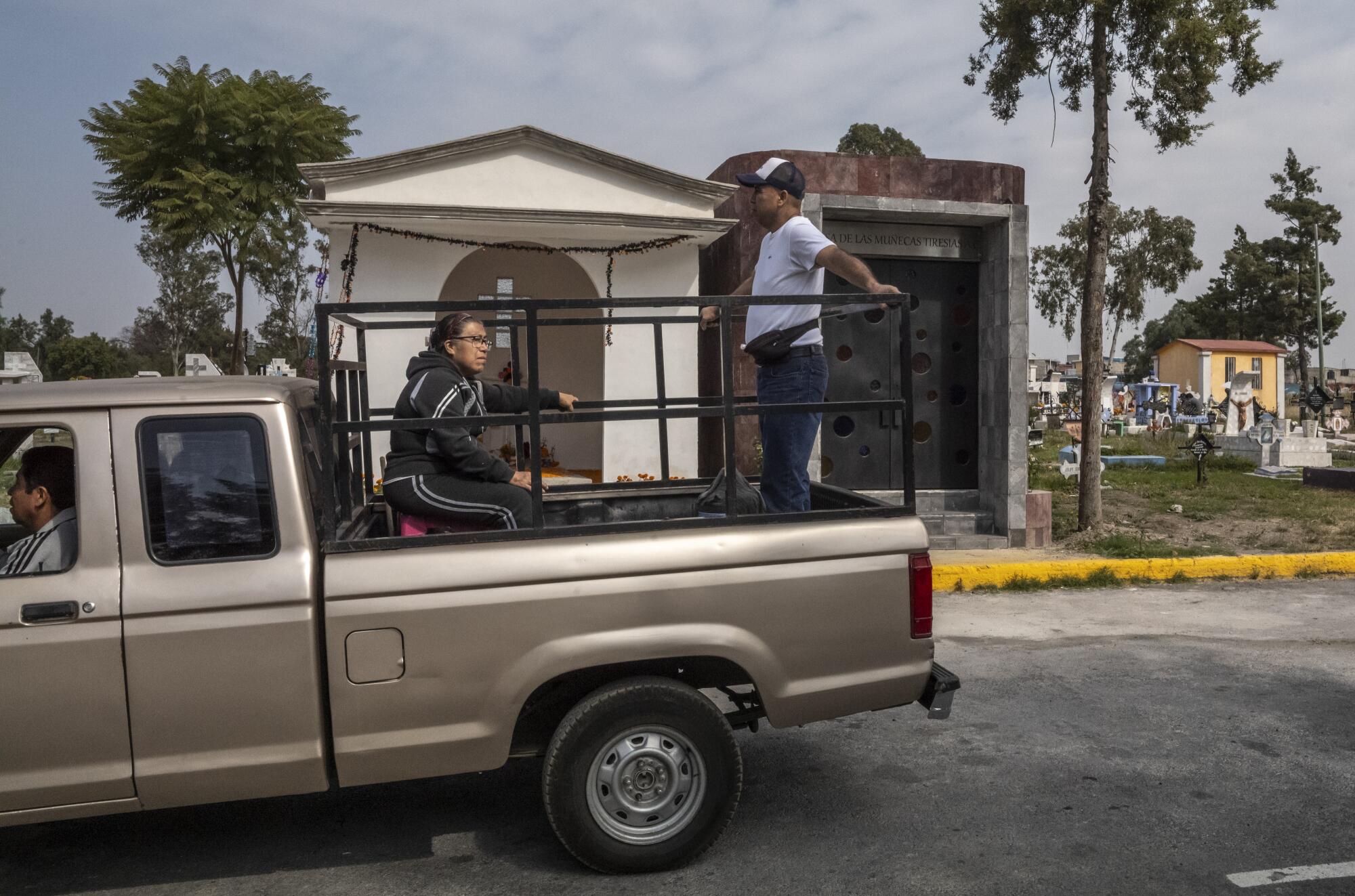
The mausoleum has space for 149 women, but so far only the remains of three women who died of illness have been transferred. Many of the women who will rest at this site were victims of hate crimes. Regardless of the cause of death, the mausoleum is now a dignified place for them and an act of reparation.
âI think this space is going to be a place for denunciation, a place of visibility, but also a place of learning,â Cuevas said.
Around noon, residents of Casa Hogar âPaola Buenrostroâ start to get ready for Day of the Dead. Standing in front of the mirror, Daniela, who asked that her last name not be used for safety reasons, paints a black line from her forehead to her chin, dividing her face. On one side, her face looks natural with orange and purple glitter over her eyelids. On the other, white paint covers her face.
DĂa de Muertos is a time to celebrate and honor the dead. From ofrendas to James Bond, De Los explored the origins and evolution of the holiday.
Next to her, Darian Gasca is drawing black circles around his eyes to turn into a catrĂn as Carin LeĂłnâs âPrimera Citaâ plays loudly. In the table next to Daniela and Gasca, Dannia Manrique, a social worker, draws on Kenny Briceño, an LGBTQ migrant from Venezuela, a horizontal black line past the edges of their mouth. They all are in the second floor of the shelter, in Cuautepec, a neighborhood north of Mexico City. Tonight they will attend the collective ofrenda in honor of victims of hate crimes that will take place downtown where Buenrostro was killed.
With makeup ready, Daniela goes to her dorm and puts her legs inside a long navy blue dress with gold embroidery. Using both hands, she carefully lifts it up. Little by little the renaissance-inspired dress covers the scars from several gunshots she received after a group of men tried to kill her in her hometown, far from Mexico City.
âThey wanted me dead, but Iâm still alive,â Daniela explained about her choice of makeup. âI may be dead inside, but outside, Iâm still alive.â
1
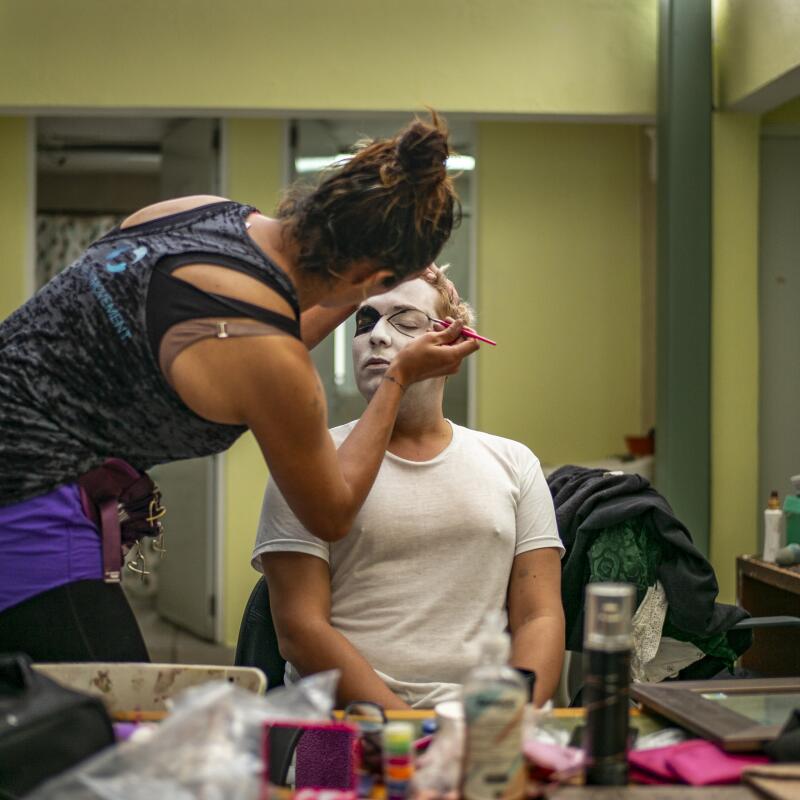
2
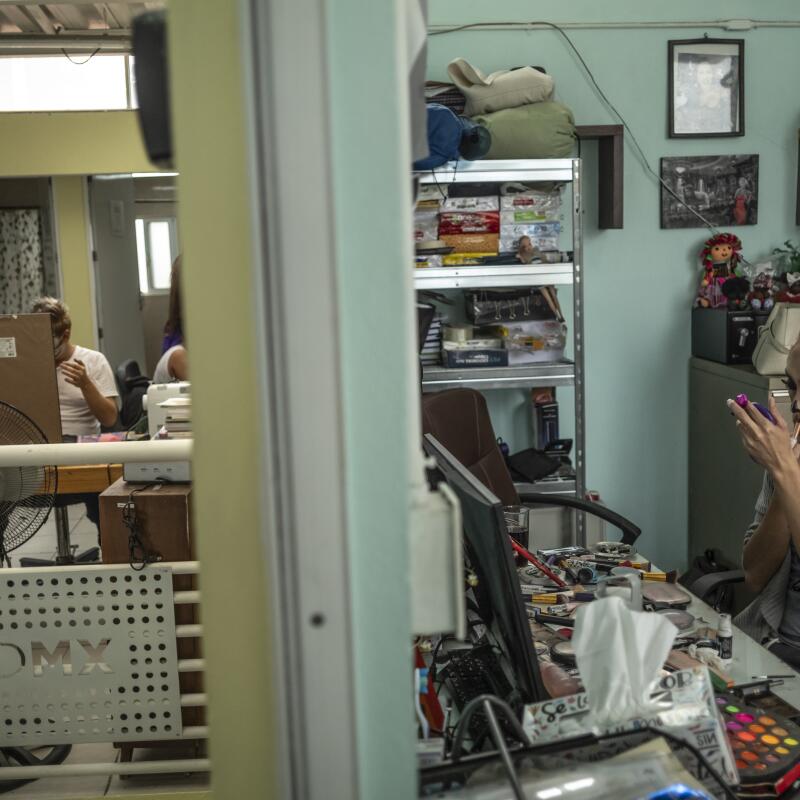
3
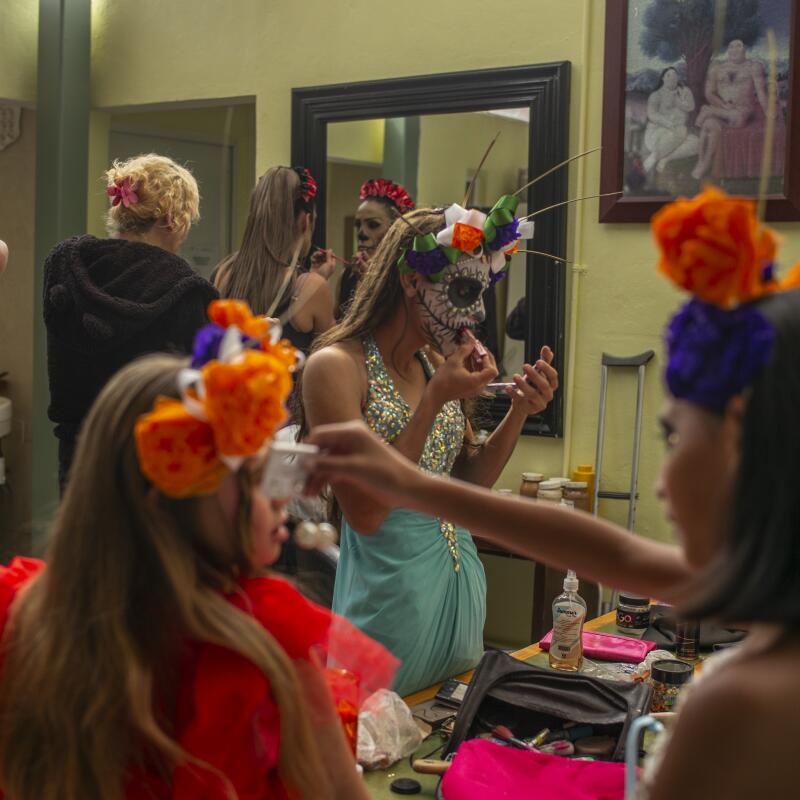
4
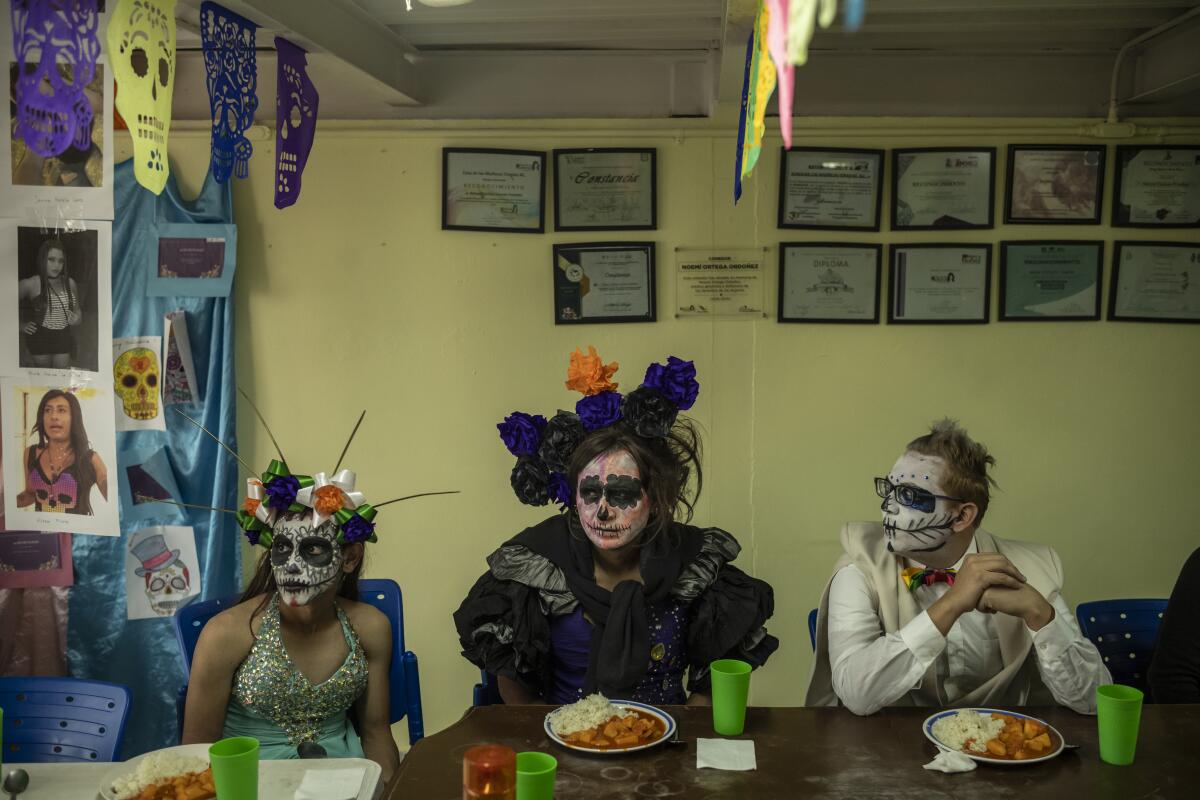
1. Kenny Briceño gets makeup on as he prepares for DĂa de Muertos. (Alejandro Cegarra / For De Los) 2. Luisa MartĂnez GaldĂĄmez puts makeup on as she prepares for DĂa de Muertos. (Alejandro Cegarra / For De Los) 3. A group puts on their final touches as they prepare for DĂa de Muertos. (Alejandro Cegarra / For De Los) 4. Josue Pena, left, Kimberly Hernandez and Kenny Briceño sit at a dinner table at Casa Hogar âPaola Buenrostroâ after finalizing their makeup. (Alejandro Cegarra / For De Los)
One of the main objectives of Casa Paola is to prevent the killings of trans women. It has become a safe place for trans women, but also for other vulnerable populations such as LGBTQ+ migrants and refugees. Luisa MartĂnez GaldĂĄmez, coordinator of the Casa, explains that besides offering housing and emergency shelter, it provides healthcare for people living with HIV/AIDS and reintegration opportunities for people struggling with homelessness or for those released from prison.
âThe challenges are that they donât give us work, they donât respect our gender. When we ask for work they want us to dress as men. Even having our legal ID,â MartĂnez said. âThe challenges are many ... But it is not impossible and little by little we are in the fight.â
Ofrendas used to celebrate DĂa de los Muertos are made using items that have special meanings with origins dating back to Indigenous people.
Cuevas is also advocating for the legal classification of transfemicides â the killing of a trans woman because of her genderâ as hate crimes. Mexico has become Latin Americaâs second deadliest country after Brazil for transgender people. In 2022, at least 87 violent deaths of LGBTQ+ people were recorded in the country. Trans women were victims in at least 48 of those cases, according to the organization Letra S.
Cuevas, remembering the night when her friend was killed in front of her, says she managed to hold Buenrostroâs alleged killer until police arrived. She says despite multiple witnesses and a video Cuevas managed to take with her phone, the man was released.
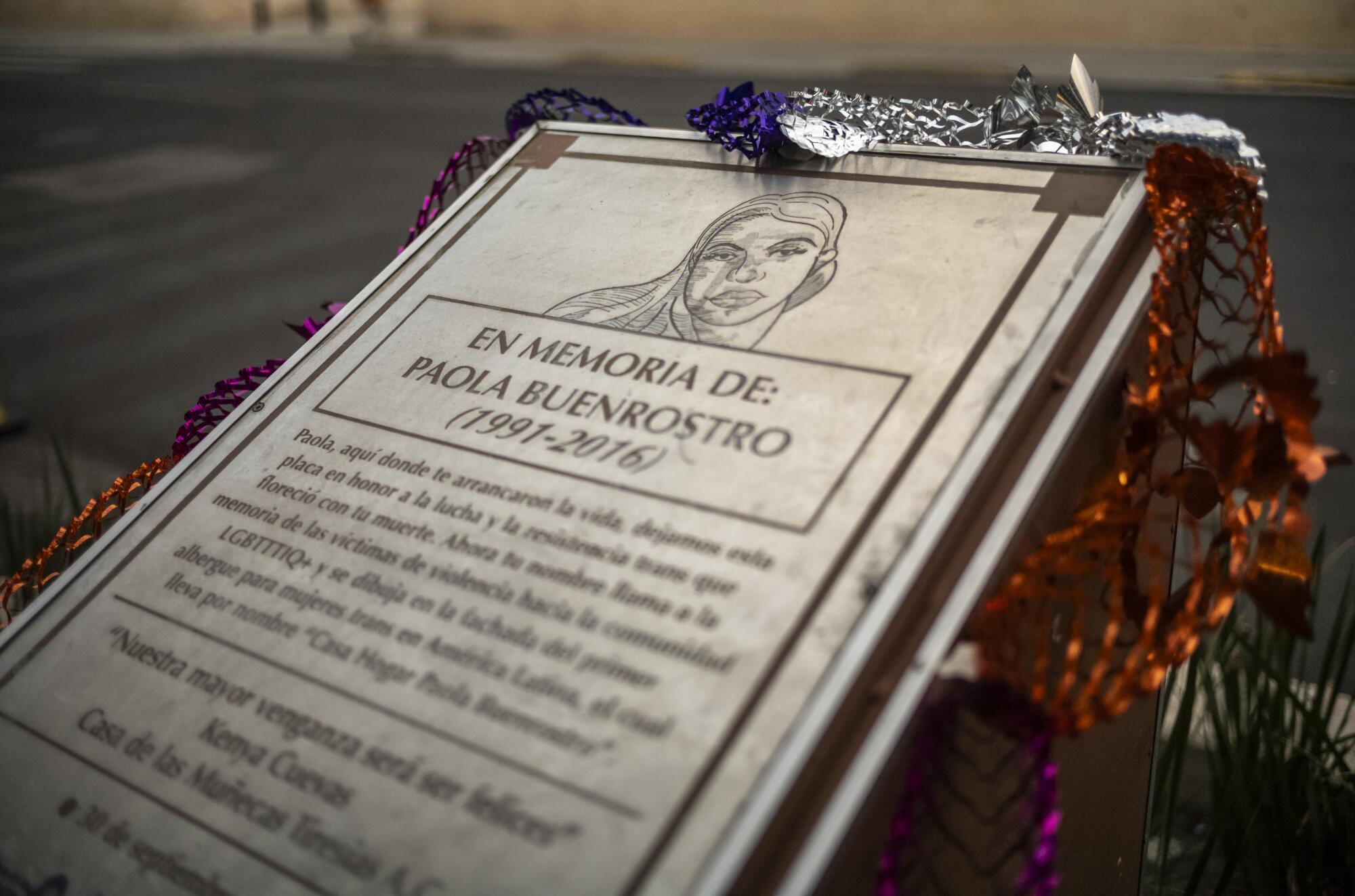
Manrique experienced a similar situation following the death of her cousin. She decided to become a social worker after her cousin was killed during a party. Now, sheâs a counselor at Casa Paola three days a week.
âOn the day of my cousinâs murder, I promised myself that I would really like to help trans girls and that these murders are not committed again,â said Manrique during a group talk in the living room of Casa Paola.
The barrios of La Indepe used to be the margins of the industrial city, but now they are encircled by urban development. Given the governmentâs initiatives, often presented as progress, these barrios are the last obstacle standing in the governmentâs way.
The five women sitting on the couch, and Gasca, a 19-year-old trans man, shared similar stories. They endured exclusion, social stigma and often the abandonment of their families, leaving them with little options to survive. Many of them were also physically and sexually abused by relatives, clients or even authorities.
Gasca fled his home in central Mexico a few months ago. One night, Gascaâs dad waited for him to arrive from a party. He started to question his sonâs identity and warned him that he had to dress like a woman if he wanted to continue living in his house.
1
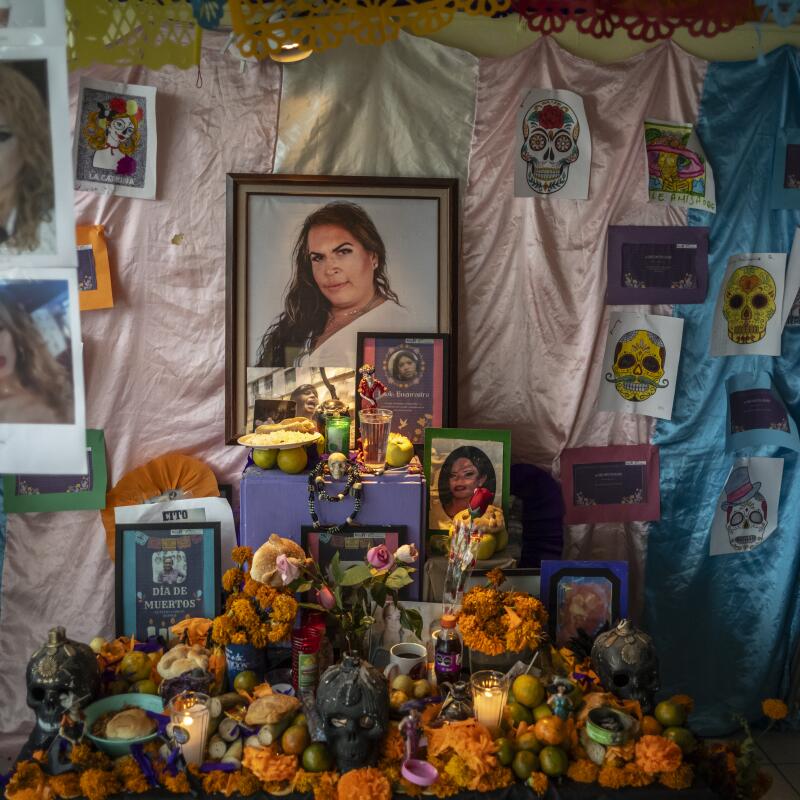
2
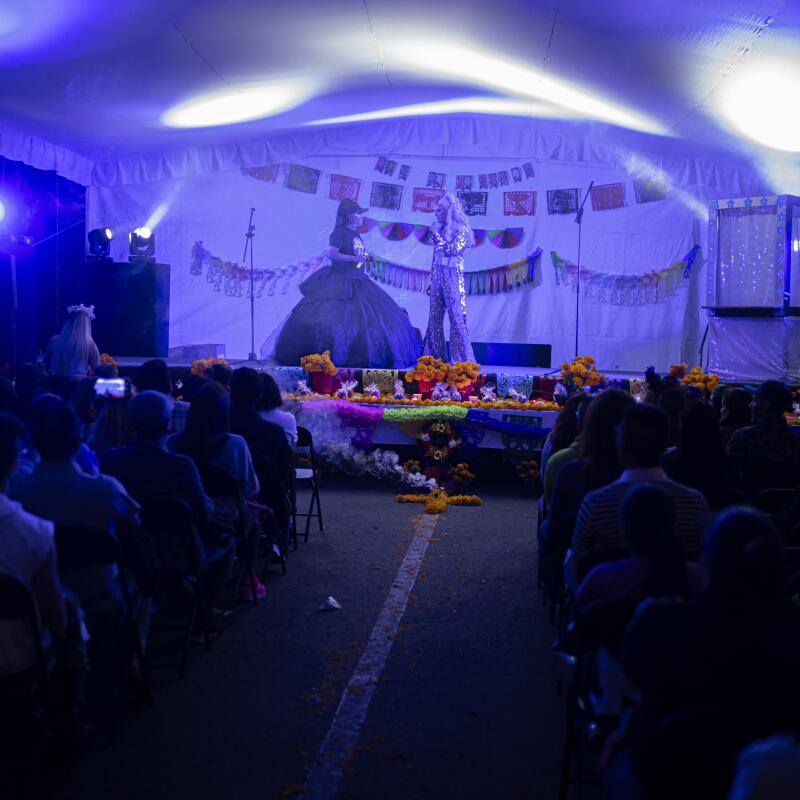
3
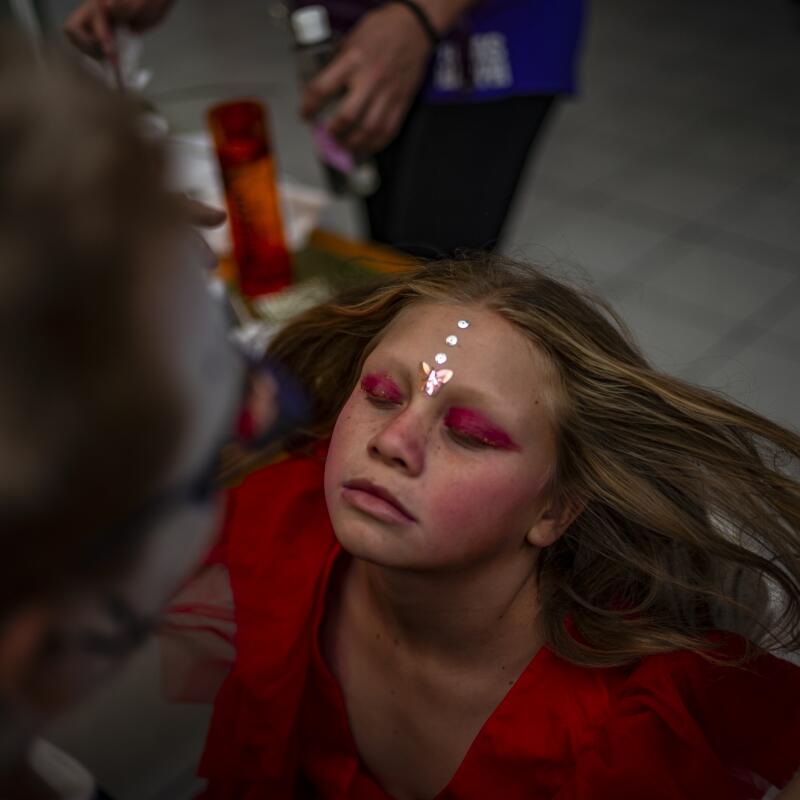
4
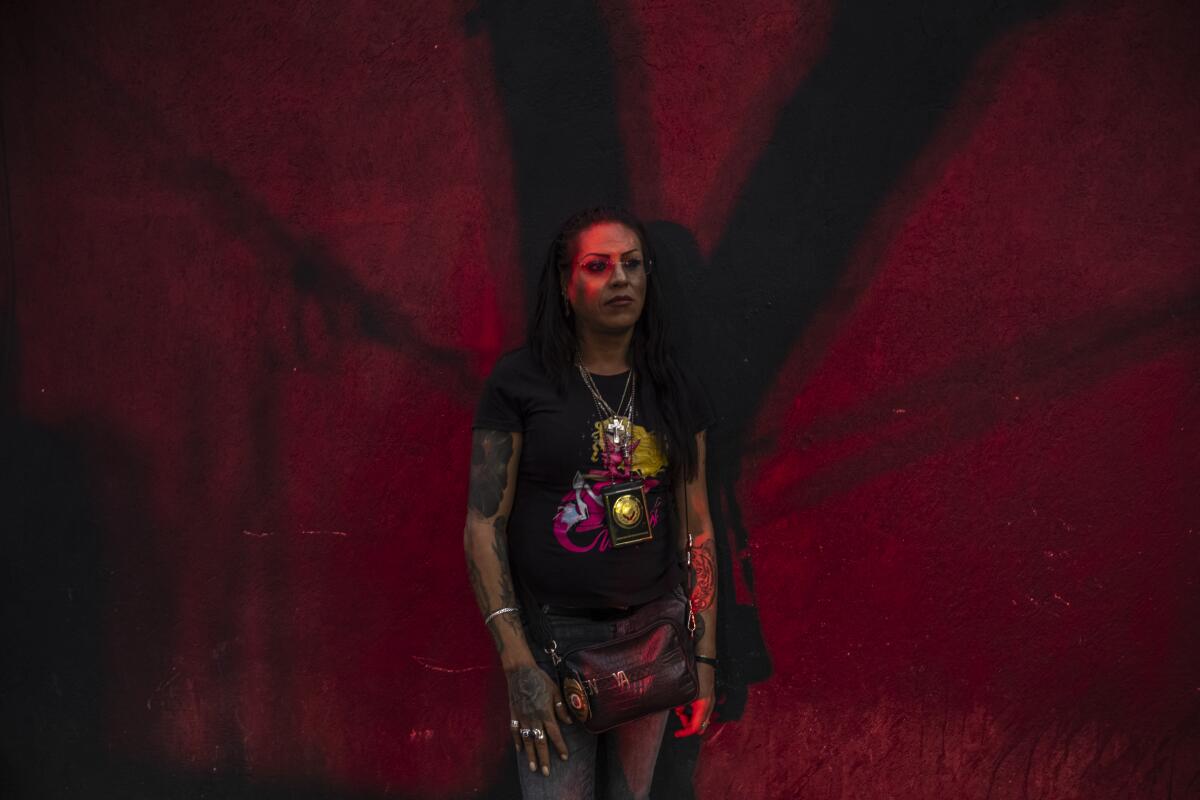
1. A commemorative altar during DĂa de Muertos, for transgender women killed over the years, at Casa Hogar âPaola Buenrostro.â (Alejandro Cegarra / For De Los) 2. An event for transgender people during DĂa de Muertos in Mexico City. (Alejandro Cegarra / For De Los) 3. Kenny Briceño combs the hair of a Venezuelan migrant child at Casa Hogar âPaola Buenrostro.â The Casa provides shelter to migrant women and their children. (Alejandro Cegarra / For De Los) 4. Kenya Cuevas poses for a portrait in Mexico City. (Alejandro Cegarra / For De Los)
âHe had me like that since 12 p.m. until 3 a.m., hitting me and asking me if I were a man or a woman,â Gasca recalled. âIf I told him that I was a man, he threw me back to the floor and kept beating me.â
It wasnât until Gasca was forced to say that he was a woman that his father stopped.
A few minutes before 4 p.m., the group, mainly dressed as catrinas, began the commute to Buenrostroâs memorial, near Metro RevoluciĂłn.
Taking caution with each step as to not step on their long dresses, they went down the steep streets of the Cuautepec hill.
They hopped on the cable car, took the metrobus, and finally arrived at the ofrenda almost two hours later.
1
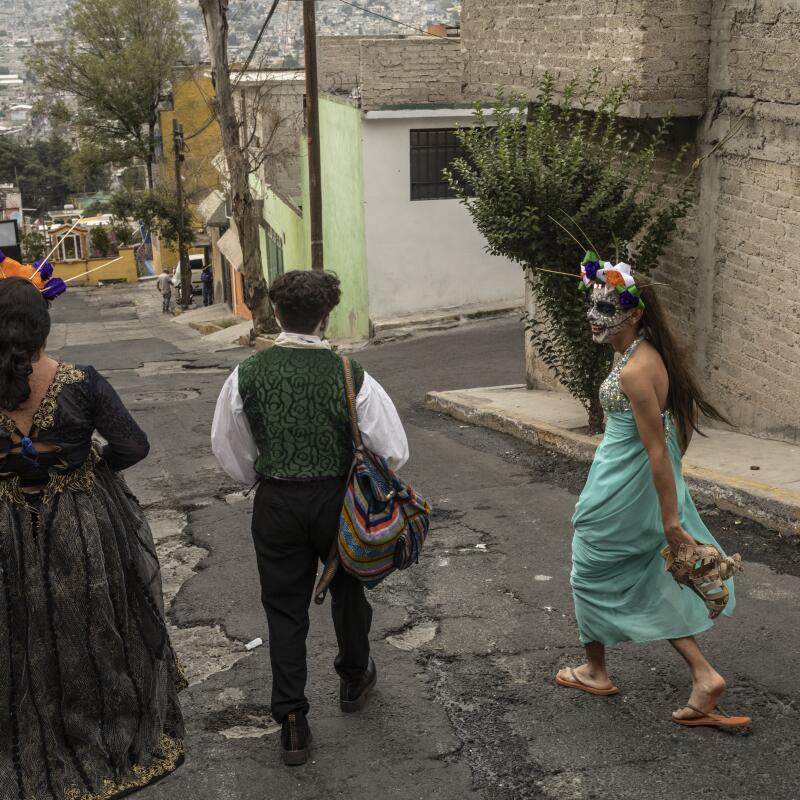
2
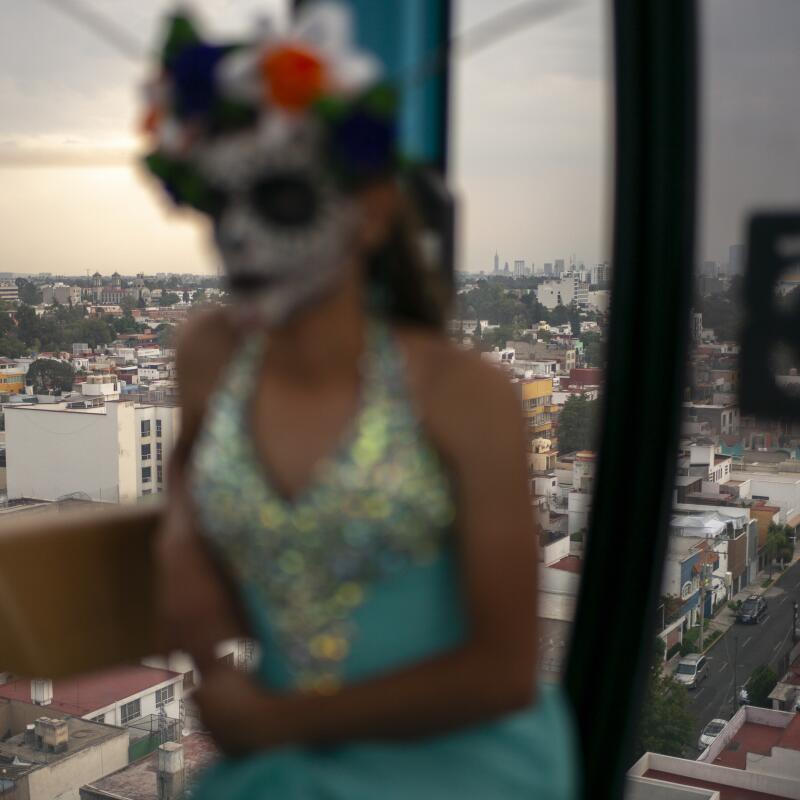
3
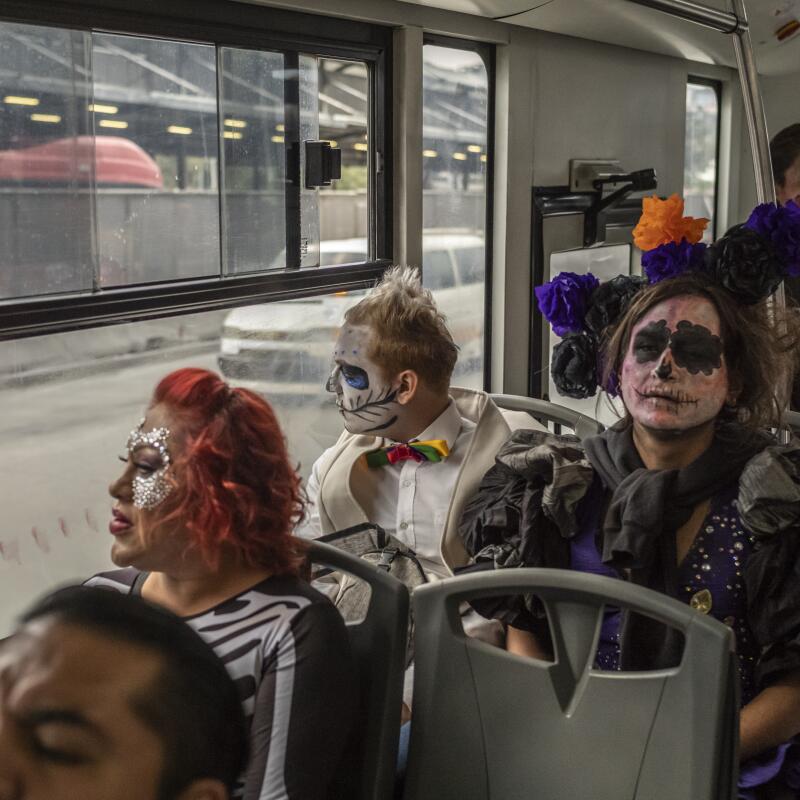
4
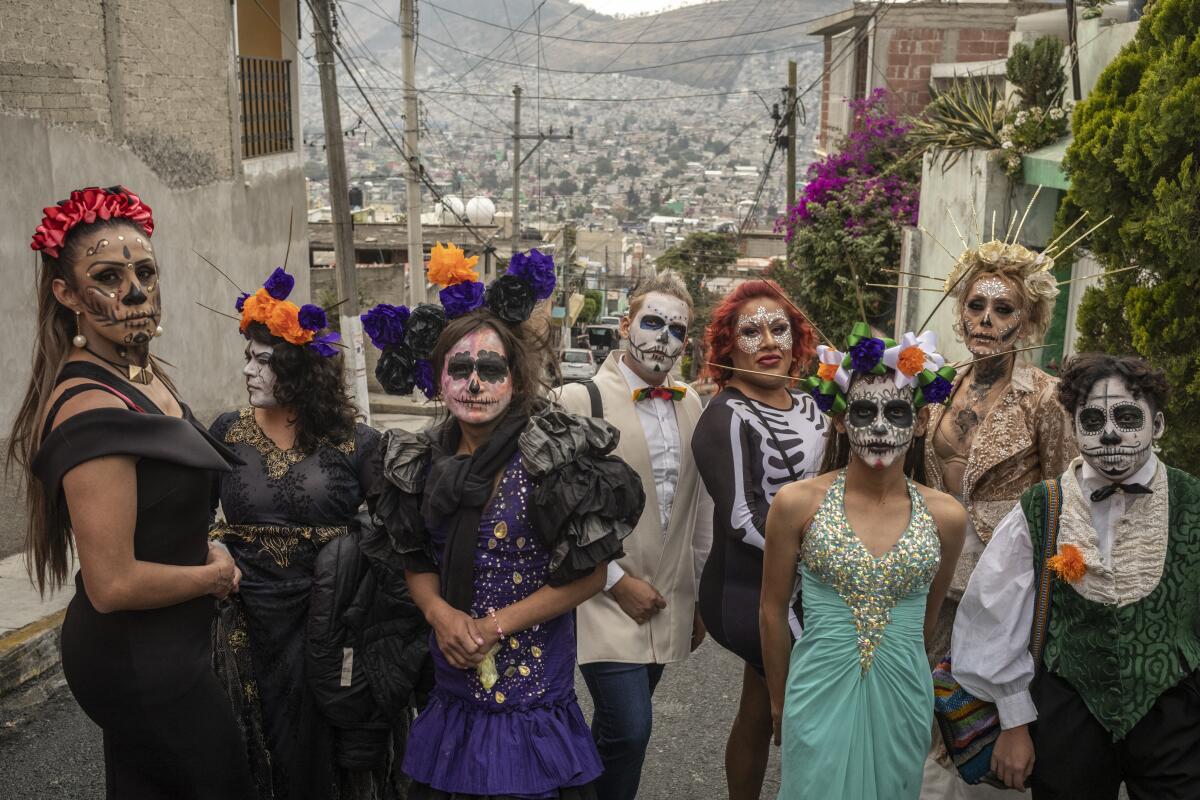
1. The steep walk to the altar begins. (Alejandro Cegarra / For De Los) 2. Josue Pena sits in a cable car cabin. (Alejandro Cegarra / For De Los) 3. From the cable car to the metro bus, the journey to the altar continues. (Alejandro Cegarra / For De Los) 4. The members of Casa Hogar âPaola Buenrostroâ pose for a group portrait. (Alejandro Cegarra / For De Los)
A wreath with pink and light blue flowers rested in front of the memorial plaque accompanied by more cempasĂșchil and celosia flowers.
âWhat we also do is make [society] really see that a trans woman is not what they think. We just want to live,â said MartĂnez. âWe want to enjoy life and that they leave us alone.â
Chantal Flores is an independent journalist based in Monterrey, Mexico. She covers the issue of enforced disappearance in Latin America and the Balkans, as well as gender, violence and social justice.
More to Read
The Latinx experience chronicled
Get the Latinx Files newsletter for stories that capture the multitudes within our communities.
You may occasionally receive promotional content from the Los Angeles Times.
